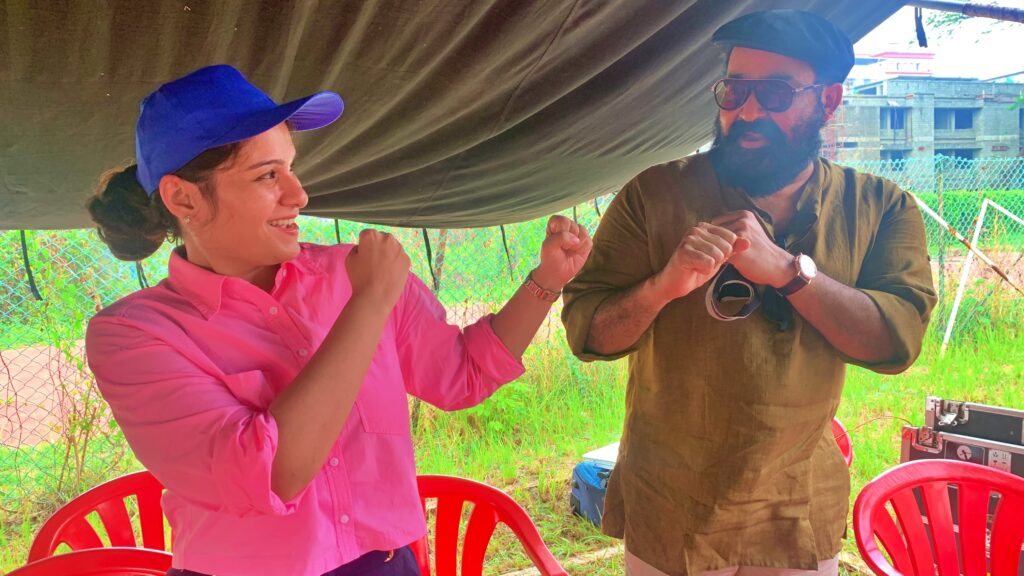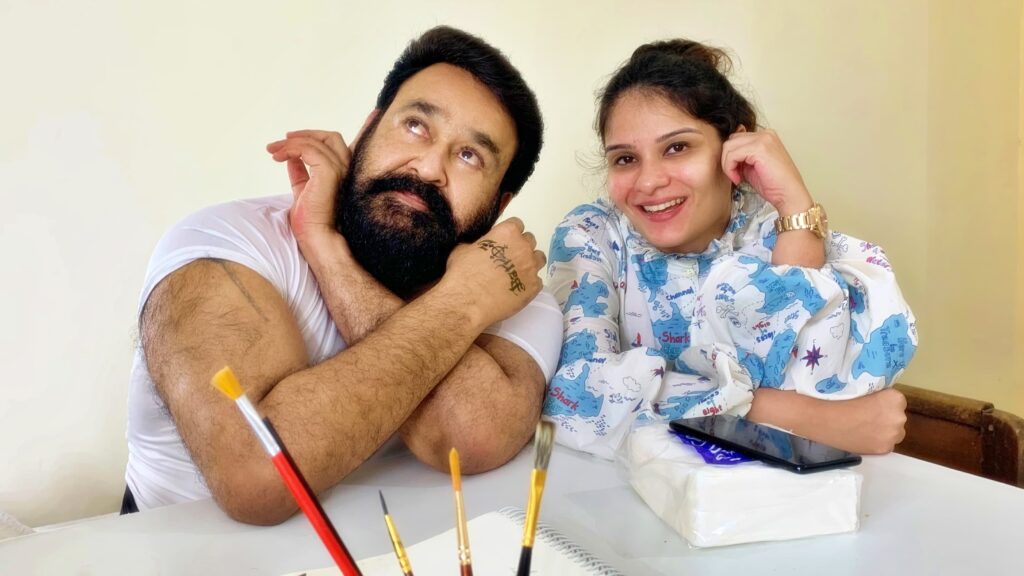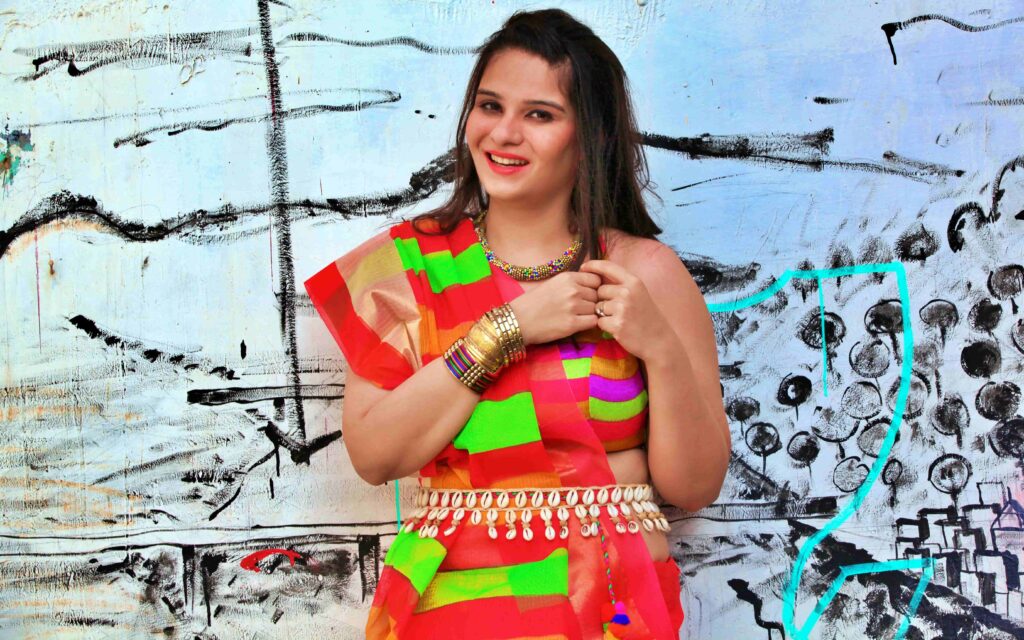Costume designer Jyoti Madnani Singh believes that each individual working in a cinema is a storyteller in their own capacity. With her innovative approach to fashion, she has managed to carve a niche for herself, influencing many aspiring designers and fashion enthusiasts alike. Equally distinctive was her work for South Indian legend Mohanlal’s much-anticipated debut directorial, the Malayalam-language fantasy film, Barroz.
Table of Contents
NIFT graduate to ‘Barroz’: Jyoti Madnani Singh’s ascent
Representing an age-old era, fantasy has been a hit-or-miss genre in the directory of Indian Cinema. But that did not faze Jyoti from delivering what she does best: weaving intricate details and rich textures into costumes that tell a story. Picking her brain, the artist had some interesting insights into the thought that goes behind the apparel, “Film Barroz depicts both the present time and an era four hundred years back. The challenge was to design shooting-friendly armor, jewelry, and costumes of the Portuguese era four hundred years back. By shooting friendly, I mean, the attire that does justice to the era and yet is comfortable enough for the actors to carry and enact the scene.”
She further added, “For period costumes, the only reference I had was the paintings of that era. The practical challenge was to give life to the minute details of the attire in the paintings without using modern machines and stitching marks. Even though I used contemporary fabrics, I wisely chose colors and dyes that can give the character of that era to the costumes. Later, all attire was handmade by a team of tailors and artisans after working on each attire for several days. Similarly, the armor and shoes in the film are not very shiny and polished. To do justice to the period, they are lacklustre.”
Backing up the story and vision of the director is quite a task for the costume designer. Counting it as one of the first checkpoints, Jyoti is confident that it is exactly what sets apart her work from others involved in the same business.
Remarking on this, she said, “The costume should become a subtle character and propel the story without gathering unnecessary attention. I had a clear brief from Mohanlal sir to, make it look real and believable. I just followed his brief, and audiences in any part of the world are going to like the costume as long as they fall in love with the character. For example, Charlie Chaplin’s Tramp outfit was used by the Late Raj Kapoor in the film Shree 420 and was very much liked by the Indian cinephiles, before that it was almost unknown by the Indian masses.”
The list of career highlights is at an all-time high for Jyoti as she spoke on collaborating with the talented veteran actor and artist, Mohanlal. In her words, “Mohanlal sir is an institution, to work in his directorial debut is my sheer luck. The world knows him as an acting genius, but for me, he is an equally enterprising person. He always wants more from life, and yet is super calm and level-headed. I follow his work on social media, his contributions to society are way beyond cinema. He is able to do it all with much élan, zest and comfort, as they say in common lingo it’s ‘supeerrr…’ “
“In today’s time, even a newbie has egos and airs about themselves, Mohanlal sir was extremely down-to-earth, friendly, and easy to work with. His work ethic is impeccable and that makes him great amongst his peers. I wasn’t even born when he gave his first superhit and yet he didn’t judge me or doubt my capabilities. And it is because of that for the first time I designed armor and jewelry in a film.”

The “Work-in-progress” aesthetic: A winning formula
Like every other industry, fashion is tough to keep up with, and becoming irrelevant is a real worry. As a NIFT graduate, Jyoti Madnani Singh describes her style as always being in a ‘work in progress’ mode.
Trends will come and go, and to keep up a unique outlook, Jyoti believes, “For any individual to keep updated in life, they need to be among the people and live a life like an observer and learner. I keep watching the youngsters on the streets, I do window shopping in malls, keep a close eye on arrivals on the street, keep an eye on fashion influencers on social media, attend annual fashion shows, keep updated about the latest collections of ace fashion designers in India and abroad.”
What comes as some incredible advice from the designer is, “Fashion moves in cycles. We were taught that fashion follows a cycle that repeats every twenty years. Presently because of too much social media exposure, fashion trends rise to popularity quickly and comparatively phase out quicker. The basics of fashion for fashionable people will always remain the same; comfort and individuality while flirting with the fashion trends.”
With an IIFA nomination for her work in Rahasya, the secret behind Jyoti’s recognition is her ability to keep it real. Taking on cues from the director, her versatility also stood out in her words, “I just picked up real references and dressed the characters likewise. At times, I picked up real costumes from people on location/shoot and in the vicinity and gave them new clothes in exchange. Luckily, they agreed to it and it brought the film nearer to reality. I guess, the audience and the jury members might have liked that element. At times, too real seems unbelievable to achieve. I was lucky.”

Keeping it Real: Fashion and daily life
Being an industry professional, there were also several challenges that the seasoned designer had to address as a fresh graduate. “The unorganized nature of the film industry, non-conducive work conditions for female technicians, misogyny, non-payment of dues, unequal pay; I have faced it all like any other female in the industry. I have lost assignments for demanding money like a male counterpart, for being ambitious in terms of publicity, promotions, etc., or behaving assertively to avoid any hanky-panky on set, not laughing at lewd jokes, or not taking part euphorically in drinking parties.”
In a typically male-dominated field, the issues faced by women at the workplace are all the same: gender bias, stereotypes, unequal pay, sexual favors, double standards, insensitivity (period shaming, pregnancy, etc.,) and more.
Extending her support to all young women embarking on this journey, she shared, “Don’t try to live with it, rather deal with it without losing your temper or shouting out loud. Just talk, speak, and take a stand without losing the integrity of your character that you are proud of. Don’t give up quickly, with time you will learn what to do and what not to do. “
By embracing inclusivity and encouraging diversity in fashion, Jyoti has set new standards for what it means to be a designer today. Her contributions continue to impact the industry, driving change towards more responsible and conscious fashion practices.

For more articles on the film Barroz, read here.






